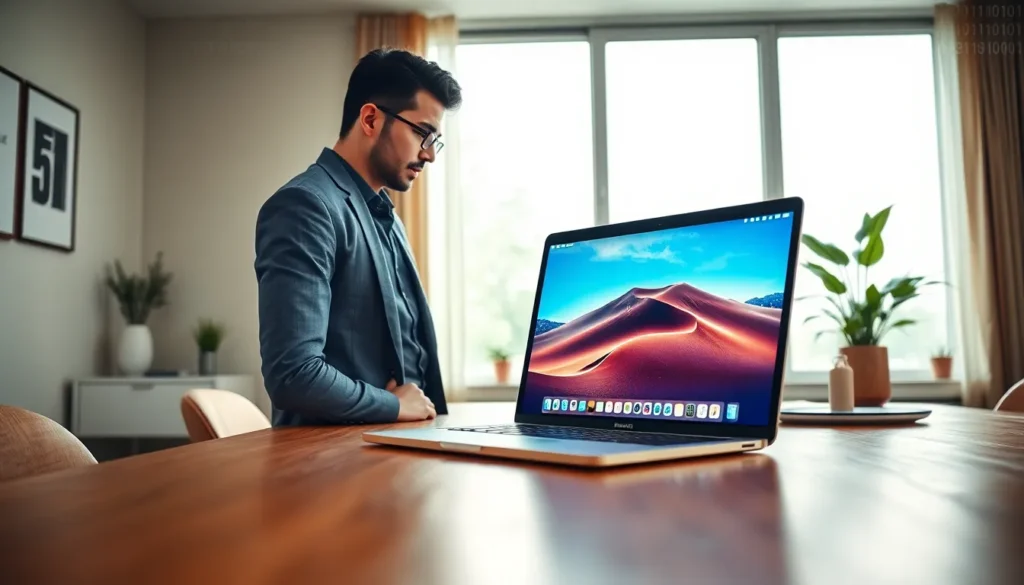Imagine this: you’re happily scrolling through your photos on your sleek MacBook, when suddenly, a pop-up asks you to download a free “super antivirus” to keep your photos safe. Sounds ridiculous, right? Yet, rumors persist about Apple products being immune to viruses. Spoiler alert: they’re not invincible. In this text, let’s jump into the reality of Apple security, the types of malware that can disrupt your tech bliss, and how to keep your digital life safe. Grab your favorite apple, no, not that one, and let’s explore.
Can Apple Products Get Viruses

To grasp why Apple products can get viruses, one must first understand what viruses and malware truly are. In the digital realm, a virus is a malicious software program designed to replicate itself and spread from one device to another. Malware, on the other hand, is a broader umbrella term that includes viruses, worms, spyware, adware, and more. Think of malware as a nasty cold that can hit any device, while a virus is just one sneezing friend in that cold joke.
Apple products, with their sleek design and user-friendly interface, are often deemed less vulnerable to these threats. This perception comes from a combination of a smaller target market and Apple’s fortified security measures. But, as their market share grows, so do the efforts of cybercriminals aiming to exploit weaknesses.
Types of Malware That Can Affect Apple Products
While Apple products are generally more secure than some peers, they aren’t entirely bulletproof. Here are the main culprits:
1. Adware
This annoying type of malware bombards users with unwanted advertisements. Adware can slow down performance and cause irritation, similar to an all-you-can-eat buffet that just won’t quit.
2. Spyware
This sneaky software tracks user actions to gather personal information. Imagine someone peering over your shoulder, taking notes on your every move, definitely not the best vibe.
3. Ransomware
Though it’s rare in the Apple ecosystem, ransomware can still infect Mac devices. It locks users out of their files and demands payment for access, akin to losing your house keys and having to pay a locksmith.
4. Trojan Horses
These malicious programs disguise themselves as legitimate software, enticing users to download them. Much like that bait-and-switch offer you sometimes see online, they can be quite misleading.
How Apple Products Defend Against Viruses
Apple has built a fortress around its devices, making it formidable against threats. Here are some of the features:
1. Gatekeeper
This built-in security feature ensures that only trusted software can be downloaded and installed. You might think of it as the bouncer at an exclusive club, checking IDs before letting anyone in.
2. XProtect
Apple’s anti-malware technology operates silently in the background, automatically checking for known malware threats. XProtect updates regularly, much like your favorite streaming service adding new features.
3. Sandboxing
This feature limits what apps can access on your system, isolating suspicious activities. It’s similar to putting a bouncy castle in a yard, lots of fun, but contained to one area.
These protections demonstrate Apple’s proactive efforts to safeguard users, making its products a less appealing target for cybercriminals.
Common Myths About Apple Products and Viruses
Even though what you may hear, some common myths can mislead users:
Myth 1: Apple Products Don’t Get Viruses
While less common, Apple devices can indeed be affected by malware and viruses. Reality check: no device is foolproof.
Myth 2: You Don’t Need Antivirus Software
Many believe that Apple’s built-in protections are enough. But, adding an antivirus can enhance security, much like wearing a helmet while riding a bike, better safe than sorry.
Myth 3: Most Malware Targets Windows
It’s true that Windows has been more targeted. Although Apple products aren’t the primary focus right now, this doesn’t mean they’re immune to attacks.
Best Practices for Keeping Your Apple Devices Safe
To keep your Apple products safe, consider these best practices:
1. Regularly Update Software
Keep your operating system and apps up to date. Updates often include security patches that address vulnerabilities, think of them as your digital vitamins.
2. Use Strong Passwords
Create complex passwords that are tough to crack. Try a mix of upper, lower, numbers, and symbols: it’s like creating a fortress around your castle.
3. Install Antivirus Software
Even if it’s not strictly necessary, good antivirus software can add an additional layer of protection.
4. Be Wary of Suspicious Links and Attachments
Cybercriminals thrive on unsuspecting victims. Always double-check URLs and attachments, much like examining that sketchy fast-food joint before you dine.
What to Do If You Suspect a Virus on Your Apple Device
If there’s a lingering worry that your device may be compromised, don’t panic. Here’s what you can do:
1. Run a Malware Scan
Use antivirus software to scan your system thoroughly. It’s similar to getting a check-up when you’re feeling under the weather.
2. Disconnect from the Internet
If you suspect a virus, disconnect your device to prevent further damage or data theft.
3. Back Up Important Data
Always back up your data regularly to avoid significant losses. It’s like taking photos before a big journey, good memories should be preserved.
4. Seek Professional Help
If issues persist, consulting with an IT professional can mean the difference between a quick fix and a digital disaster.

